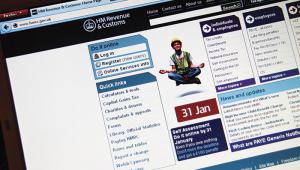Government for the people shouldn’t end at the ballot box. This, according to Ben Gummer, is the key lesson from Brexit. As the Cabinet Office minister made clear at Reform’s annual conference last week, government needs to serve citizens – “not the other way round.”
Gummer’s challenge is this: in a world where citizens expect faster, better services – primarily through their tablets and smartphones – government is lagging. As the minister argued, government will not be able to change its shopfront with a nineteenth-century back office. In a digital world, government’s business model needs to be transformed.
This does not mean, in the words of the government’s (tellingly named) Transformation Strategy, a mere technological “bolt-on to the side of an organisation” – such as faster computers or another website. It means “the total transformation of government” – a disruption of current working practices, better use of data to design services that meet the current and future needs of citizens, not Whitehall silos. This would build on recent attempts to turn interactions on their head. GOV.UK Notify, for example, updates people, through text messages or emails, about the progress of anything from passport applications to benefits claims – rather than wait for citizens to call departments.
To deliver these reforms, the strategy argues that leadership roles, working patterns and culture are all due an upgrade.
“Grow[ing] the right people, skills and culture” requires a strengthening of leadership skills, it also points out. This is much needed. In 2015, there were only four ministerial departments with digital leaders on their main boards. Expanding these roles could disseminate digital transformation. The civil service has recognised elsewhere the need to move away from rigid civil service pay structures, to entice people into these roles from the private sector if necessary.
The most eye-catching leadership announcement is that of a chief data officer to lead on data use across government. This role – supported as it will be by a data advisory board – should be filled by someone capable of making data use accessible to those outside narrow digital roles. This can help spread its use beyond data analysts, to embed the cross-government working the strategy hopes to achieve.
This transformative business model must then become part of the DNA of public servants. The Government Digital Service is well-placed to provide early guidance, but its ultimate aim should be to make its thinking so ingrained in the culture of Whitehall that it becomes redundant. Team-based working combining policy and digital service design can disrupt hierarchies, with digital specialists working alongside policymakers to design services that meet defined outcomes. DWP’s recent payment of benefits to a mobile phone app exemplifies this thinking.
Sharing this thinking would be the first step towards departments collaborating “across traditional organisational boundaries.” Government-designed or open-source software, such as whole-of-government procurement portals, should be designed with the input of people who will use the software in government. An 'agile' approach was used successfully to build the current IT procurement portal, the Digital Marketplace.
Wholesale change of working practices also needs a strong message of support from the prime minister. After all, disruptive approaches will be, well, disruptive. In the last parliament, David Cameron backed GDS, after speculation over the organisation’s future. Theresa May should publicly back Gummer’s approach.
This would give the government impetus to deliver the radical transformation needed for the state to serve all. This would make ballot boxes the start of government for the people.




















